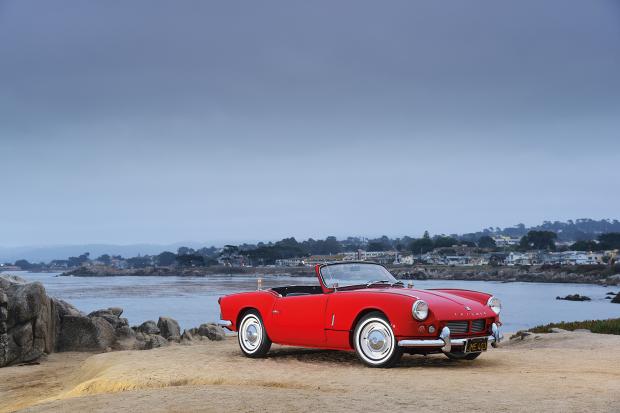“The biggest problem caused by the accident was the damage to the frame forks, which were both bent by more than 10º. Fortunately my painter is a bit of a master and managed to straighten the chassis by carefully applying tension and heat. I was afraid we were going to have to find another chassis, or butcher the original, but he managed to fix it.”
The visit to the specialist turned up another surprise when it was time for paint: “It’s Signal Red – paint code 32,” says Connally, “but when it came time to order the paint, he said, ‘This is the paint you should have, and this is what’s on there now.’ He put the two samples together and you could see that one was much more blue than the other. It’s now a much brighter red – when the sun shines it really pops.”
Beautifully finished, the Triumph had one tyre on the show field before it hit a problem: “I got everything back together, but for the life of me I couldn’t get it started. There was no reason for it not to, because the engine hadn’t been damaged in the crash.”
Weeks of fruitless fettling and testing eventually gave way to revelation: “The force of the impact had caused the timing chain to skip a couple of links – it took me quite a while to figure out what had happened!”
Years of dedication have resulted in quite possibly the world’s finest early Spitfire, but although immaculately presented, in concours-winning condition, JME 403 is no show queen: “I still use it, even after the accident. I’ve covered around 9000 miles since the first restoration, 1500 of those since I finished it the second time. I drive it all over the two-lane twisties of the hills and mountains in San Diego County – I swap the steel wheels and crossply tyres for Minilites with radials, which completely transforms the character of the car. It’s a dream to drive there.”
Despite the show successes, it’s clear that Connally’s greatest pleasure comes from using the Triumph as its maker intended, and in a manner of which his race-ace father would have approved.
“When I was a kid we’d take it out on the country lanes and he would slam it,” he says, eyes sparkling.
“He was an excellent driver – we’d get out on those roads and he’d whip it around like it was nothing. Nowadays it doesn’t feel quite so fast, but back then, sitting in the passenger seat or perched on the back shelf, that odometer just seemed to spin round.”
Images: Will Williams
BUY A TRIUMPH SPITFIRE
READ MORE
Buyer’s guide: Triumph 1300, 1500 & Toledo
Mercedes-Benz W123: some things were built to last
Porsche 911 vs Alpine A110: Rally heroes for the road
Greg MacLeman
Greg MacLeman is a contributor to and former Features Editor of Classic & Sports Car, and drives a restored and uprated 1974 Triumph 2500TC






